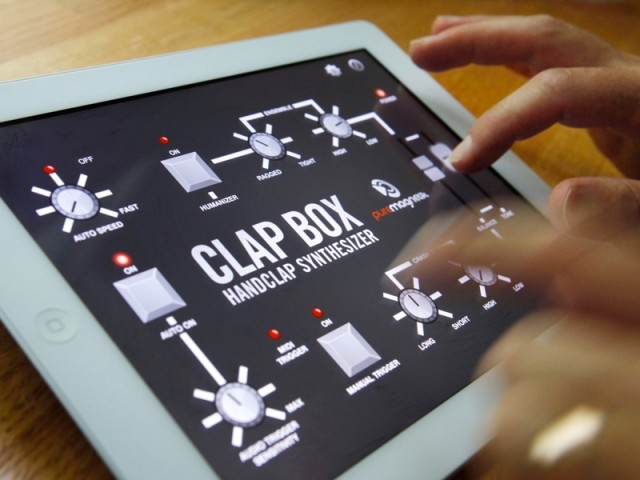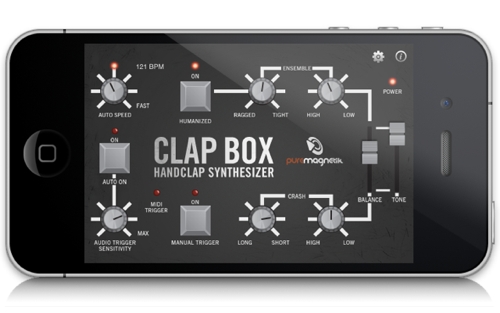
Here’s an iOS app antidote to those desktop plug-ins that do everything, to elaborate virtual synths with eighteen separate modulation envelopes. It’s an app that just … makes clap sounds. And it brings your iPhone or iPad boldly into the 1980s.
The handclap sound you hear in so much electronic music, particularly that originating from the 1980s, is none other than the Simmons Clap Trap. And soundware boutique / developer Puremagnetik, the folks who have built a reputation sampling classic instruments for the likes of Ableton, has emulated that tool on iOS. It’s certainly … specific. But that could make it just what some people want. I know a lot of people love the ability to dial up the Fairlight in that app for iOS, so that “tap your screen, get vintage sound xx” idea extends here.
If you just want the clap sound, by the way, you can grab the sample Simmons Clap Trap samples in Ableton Live Pack format. (Raw samples are usable with any software, too.) That file is available, among other free downloads, on Puremagnetik’s site:
Puremagnetik Free Downloads
For its part, the iPad app doesn’t want for features. (Handclap with Retina Display support, anyone?) The developers write:
- Authentic emulation of the original Simmons Clap Trap made with real samples
- Audio Trigger via your device’s built in mic – just clap your hands in realtime to trigger!
- Full MIDI support over WiFi, USB camera connection kit or a dedicated MIDI interface such as IK Multimedia’s iRig MIDI.
- Hi resolution Retina Display graphics
- “Humanize” function creates random variations
- Quick “Tool Tip” pop ups from info button
US$1.99 for iPad/iPhone running iOS 4.3 or later.
And no, this isn’t an April Fool’s Joke. Anyway, then it’d be a cowbell-only app.
Just install it, and:
“You’ve got the clap!”
Wait, no. That didn’t sound right at all.
Find it on CDM Apps:
http://apps.createdigitalmusic.com/apps/clap-box
Updated: Developer (and all-around nice guy) Micah Frank tells CDM via Twitter: “some devs might also like to know it’s running off libpd – filtering, sig routing, modulations etc all pd”
That’s this free and open source library, which makes Pure Data embeddable:
http://libpd.cc
(I was a contributor, Peter Brinkmann is the primary author – and the guts are identical to Pure Data Vanilla, which you can run on your desktop to produce effects, synths, and more that then run on these other platforms, all programming visually rather than with code.)
